Anyone who throws knives will tell you that picking a good knife to throw is based on personal preference and that there is a wide variety of competition throwing knives out there to meet everyone’s needs. We’re here today to help you figure out which knives may be the best choices to help you throw safely, and accurately. We’ll be going into some detail on what to look for in a good competition throwing knife for the World Knife Throwing League so you can get a head start on finding which knife will suit you best. From the coverage of the blade to the weight and length there are many possibilities. But there are standards that work well for the knife throwing competitions in the World Knife Throwing League.
A heavy knife may be more fatiguing on a thrower throughout the competition, but is also more forgiving when the knife needs to stick into the target. A knife that weighs less is less fatiguing, but is also more prone to not stick quite as easily. Depending on the thrower individual characteristics come into play so if you feel like you use enough power in your throw to stick consistently then you may want to look at slightly lighter knives. Another thing to consider when looking at the weight of the knife is your ability to control it. Heavier knives as mentioned may be a bit more fatiguing and that is due to needing to exert more strength to control the aim and rotation. Lighter knives usually will be easier to control and aim but that also means that the aim can be altered by smaller differences in your throw.
The thickness of a throwing knife is important when it comes to durability, a thicker knife may be less prone to breaking in competition. Even outside of competition throwing, knives should last as long as possible. For this reason, WKTL knives are all made more than 6mm (nearly 1/4 inch) in thickness. In the WKTL competitions, a knife breaking can result in a score of 0 if the thrower fails to present another within 90 seconds. but for everyday use, it is much safer and longer lasting to make sure that your knives are thick and durable enough to stand up to repeated use.
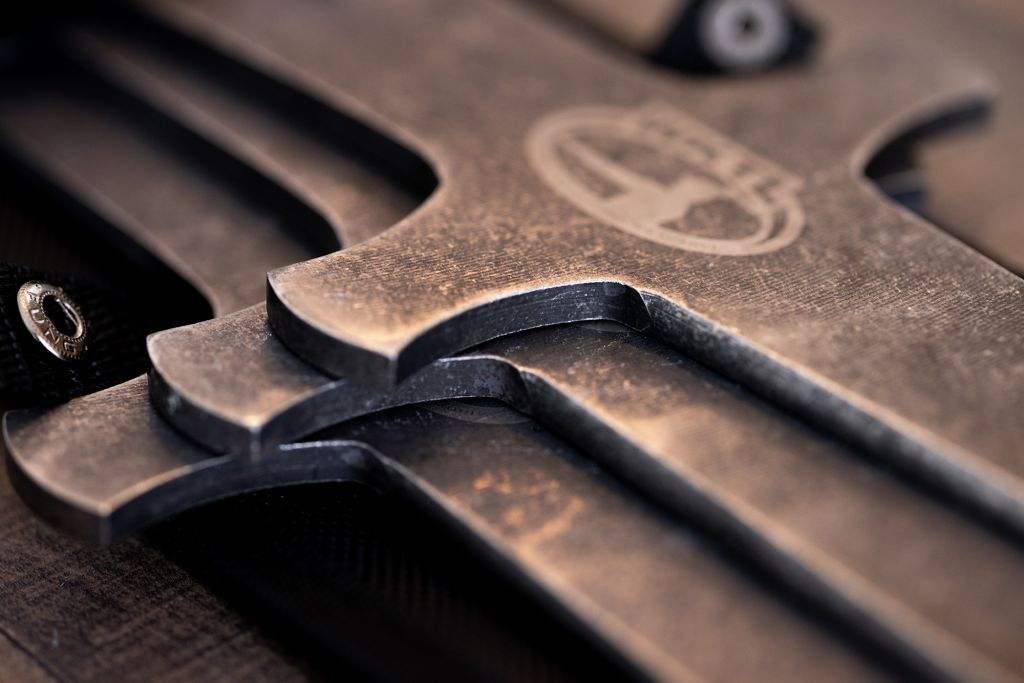
Competition throwing knives forged in one solid piece such as those created by Toro Knives and by WKTL offer a higher level of durability in comparison to those made in multiple pieces.
All competition throwing knives must have guards that are at least 4” inches in width. This helps ensure that knives are not able to ricochet off the target and through the fencing at existing facilities.
The characteristics of a knife greatly impact the way that they rotate, but so does the way you throw them. Arguably the best knife for you is the one you can consistently throw from the minimum throwing distance, with your most consistent throwing style. Throwing from the minimum distance ensures that small imperfections in your throw are not magnified over a greater distance. This is key to finding which knife will suit you best.
For competition throwing knives in WKTL you’re going to want to know some key factors of the rules that will help you determine the best knife you can use and how each rule applies to your choice of throwing knife.
A Summary of Knife Throwing Rules detailing knife specifications in competition:
Currently, we only have two knife brands with allowed knives for competitions, WKTL knives and Toro Knives. Though more will be coming you can see the full list of approved knives here.
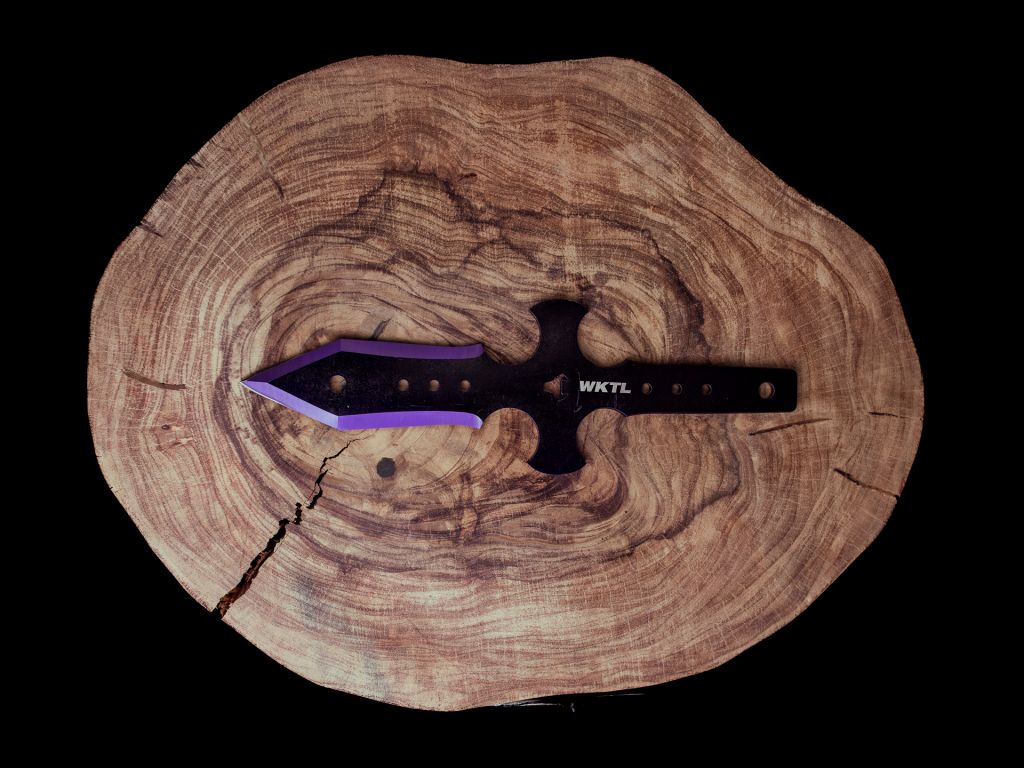
The main factor to keep in mind with this specification is that everyone’s arm, throw, and strength is different. But from the 10ft and 15ft foot line of throwing in WKTL competitions, this general length range of the knife will give you consistent rotations. You will still need to practice and tailor your distance slightly to make up for your personal factors in the throw.
This helps ensure that knives are not able to ricochet off the target and through the fencing at existing facilities. This also provides a deliberate area in which to grip the knife by the handle for safety.
Keeping in the conversation of the guard, the WKTL approved knives do have varying distances on the handle. This can inform where you keep your grip while throwing. You’ll need to keep in mind your grip position on the knife as it is another element that affects the rotation. Your throw can be altered if you’re using the guard as a guideline for your grip and the guard is different than what you’re used to.
The cheek of the knife helps when trying to figure out the coverage it will have on the target.
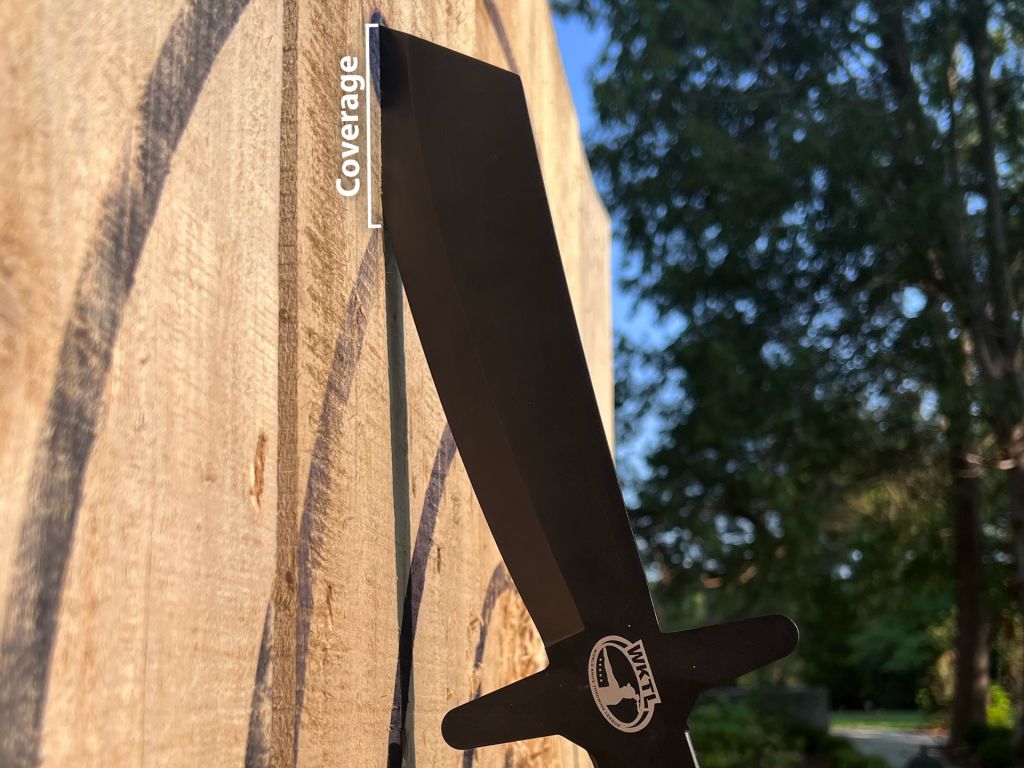
Coverage Refers to how much of the knife you are actually able to stick in the target and have it count in knife throwing competitions. This is perhaps the reason the Blackhawk, which was created at the maximum competition legal length of 16”, is such a popular choice amongst high-level competitors. Though the coverage of the knife on the board does help, you’ll need to keep in mind that, unlike axe throwing, you’ll still need to ensure you have a proper rotation and the tip of the blade is submerged in the wood too.
As mentioned before, the weight of the knife does determine your ability to control the throw and also how easily the knife will penetrate the wood target.
Now that you have some knowledge on the benefits of competition throwing knives, here below we have a small selection of knives you can check out for knife throwing competitions. This is just a taste of the many varieties there are available to use in knife throwing competitions for WKTL. For a full list of WKTL approved knives as well as a comparison tool, you can check out all of the WKTL Approved Knives here.
Weight: 1.6lb
Thickness: 0.235 in (6mm)
Overall Length: 16 in
Blade Length: 9.25 in
Blade Width: 2.2 in
Guard Width: 4.7 in
Steel Type: 3CR13 Stainless
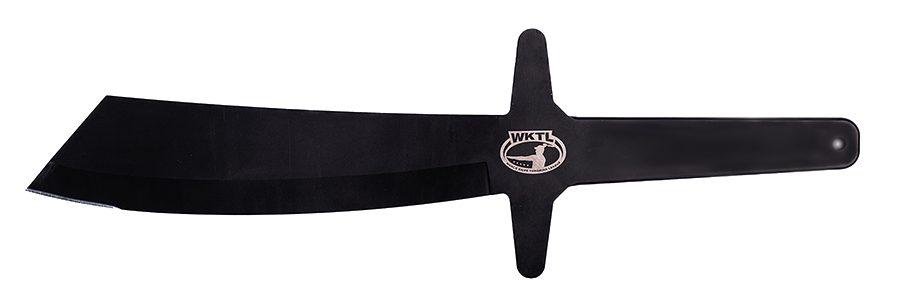
Named after the Common Black Hawk (Buteogallus anthracinus) this knife is broad like its namesake’s wingspan. Fashioned in a modified clip point blade style. This massive knife is the longest in the roster of WKTL knives and just under the weight limit for WKTL Legal Competition Throwing Knives by 0.05lbs. The heaviest knife in the WKTL lineup, it’s a fan favorite due to the coverage the knife provides.
Weight: 1.2lb
Thickness: 0.236 in (6mm)
Overall Length: 14.25 in
Blade Length: 7 in
Blade Width: 1.5 in
Guard Width: 4.7 in
Steel Type: 3CR13 Stainless
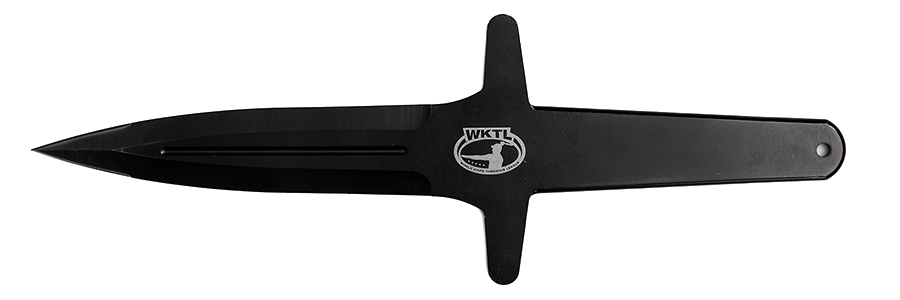
The Merlin is named after the falcon of the same name (Falco columbarius). Just like this well-regarded falconry bird, the Merlin knife is easy to control due to the weight ratio of the knife making it one of the most balanced knives in the lineup. The tip is fashioned with a needlepoint style for optimal wood penetration with proper rotation in competition.
Weight: 1.12lbs
Thickness: 0.236 in (6mm)
Overall Length: 14.5 in
Blade Length: 8.7 in
Blade Width: 1.85 in
Guard Width: 4.33 in
Steel Type: 3CR13 Stainless
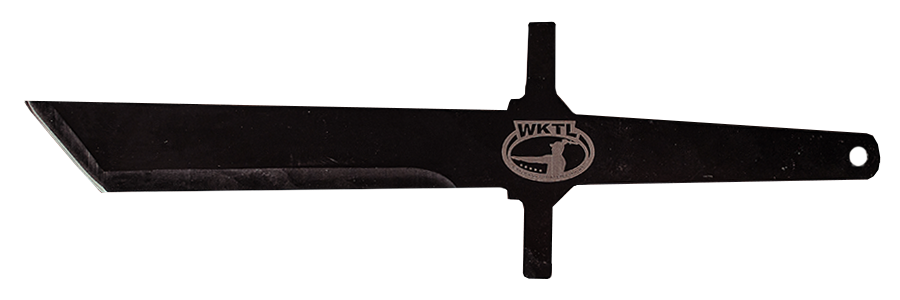
The Tobi is the Japanese name for the bird of prey known as the Black Kite. Just like its name, the blade was fashioned in the style of the Japanese blade known as the tanto. This is a modern version of the traditional Japanese blade, but we have adopted the style for use in throwing. Similar to the Blackhawk but with a bit less weight and updated with a more modern angular profile.
Weight: 1.2lb
Thickness: 0.236 in (6mm)
Overall Length: 14.6 in
Blade Length: 8.5 in
Blade Width: 1.83 in
Guard Width: 4.35 in
Steel Type: 3CR13 Stainless
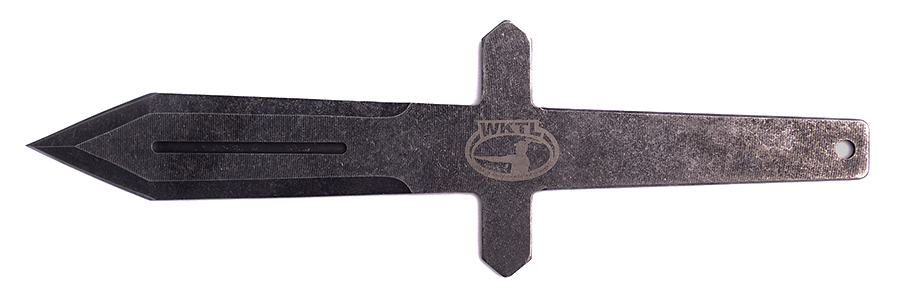
The Barbarian is named after all the warriors from many cultures around the world that were strong and fierce but considered ‘uncivilized’ or ‘primitive’ by some in their time. This knife is in a similar diamond design to the Sparrowhawk of the Birds of Prey line but distinctly different in its make with more crisp angles and a slightly heavier blade. In terms of a competition throwing knife, this knife offers plenty of coverage and sticks effortlessly.
Weight: 1.33lbs
Thickness: 0.236 in (6mm)
Overall Length: 14.625 in
Blade Length: 4.0 in
Blade Width: 2.1 in
Guard Width: 4.36 in
Steel Type: 3CR13 Stainless
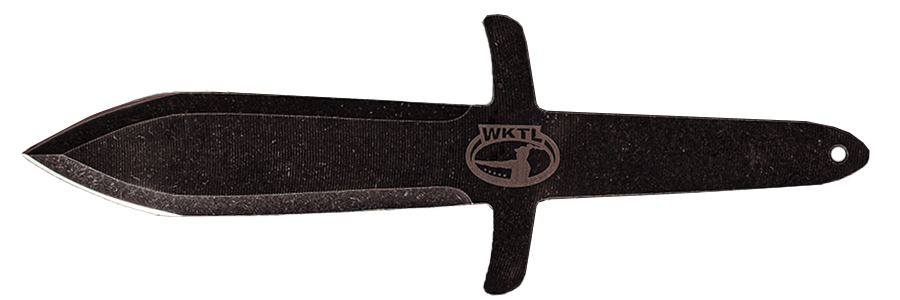
Named after the people and warriors that hail from the Scottish Highlands, this knife is one of the longest knives in the WKTL roster. It has a distinct wide blade as well and a smoother design than many of the WKTL roster. This wide blade helps with the coverage of the target for more scoring area covered in competitive play.
Weight: 1.1lb
Thickness: 0.236 in (6mm)
Overall Length: 15 in
Blade Length: 8.75 in
Blade Width: 1.55 in
Guard Width: 4.35 in
Steel Type: 3CR13 Stainless
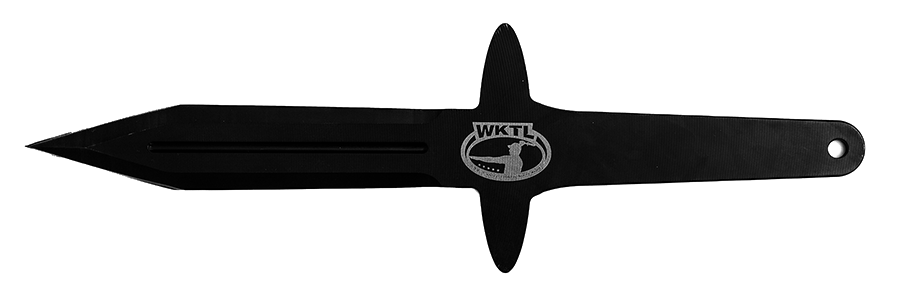
The Lancelot gains its name from one of the most famous knights in King Arthur’s legend. This knife is quite unique to many of the knives in the WKTL line being very long and lightweight. Though it does have a smaller width than many knives, its length helps the rotation of many throwers from the proper throwing distances.
We’re currently working on getting more options for knives into competition play and the first group up for official league play are the amazing knives from Toro Knives! Here’s a sample of those knives that meet specifications or league play.

This iteration of the Toro Bandito Throwing Knife has been crafted with competition throwing knives in mind. The dimensions have been adjusted from the original to make this fan favourite competition legal in WKTL.

Much like the above, this version of the Toro Muerto Throwing Knife has also been forged with competition throwing knives in mind. The dimensions have been adjusted from the original knife by Toro to make this fan favourite competition legal in WKTL tournaments. Rest assured, the knife throws just as beautifully as it used the original. Dare we say it, it might even throw a little better.
We hope this information and list of knives here will help guide you to make a well-informed decision on your first set of competition throwing knives! If you’ve found this information useful we would highly recommend that you follow our youtube channel as we are working to promote new informative throwing videos as well as broadcasts of the official World Knife Throwing League competitions on ESPN and local tournament livestreams. Happy Throwing!